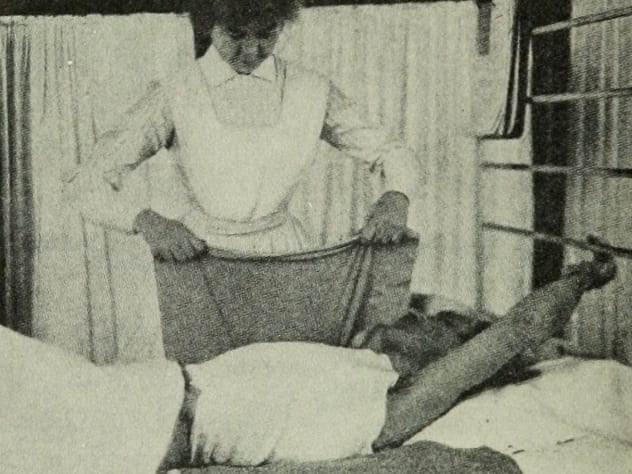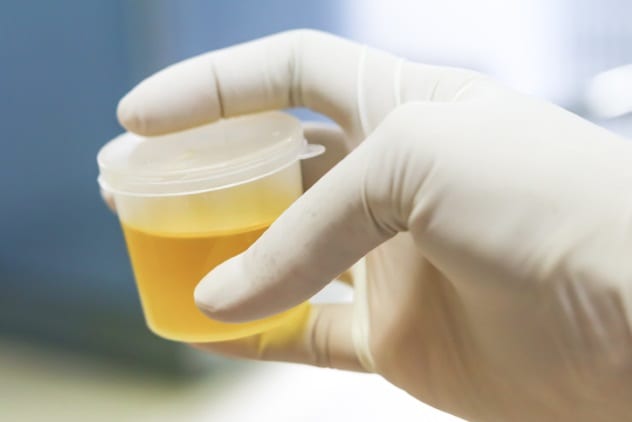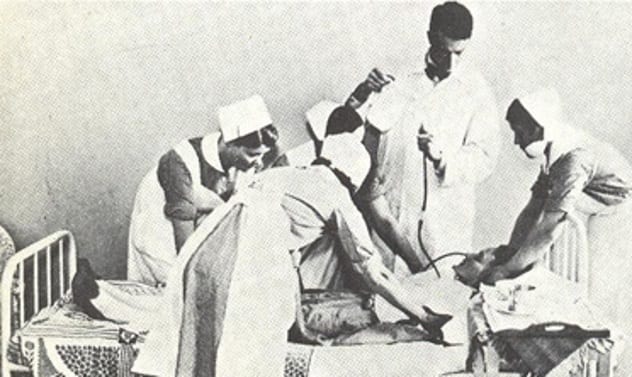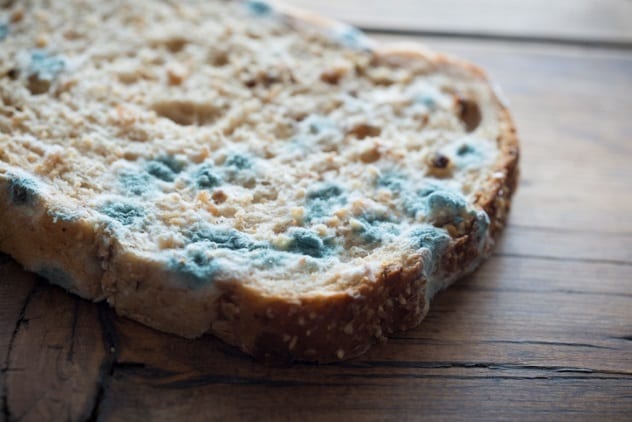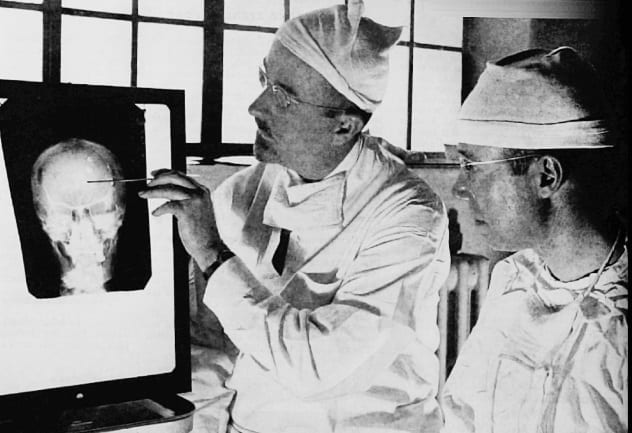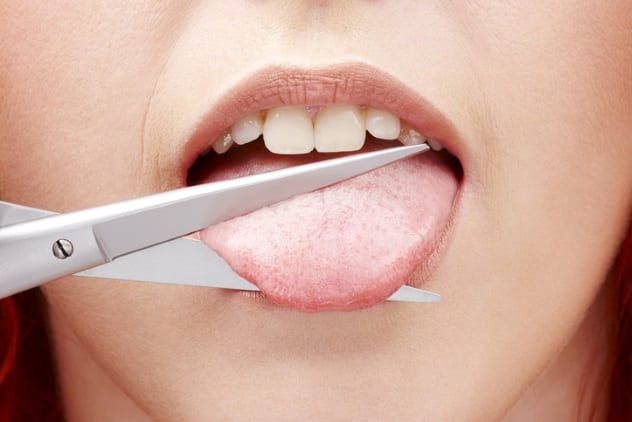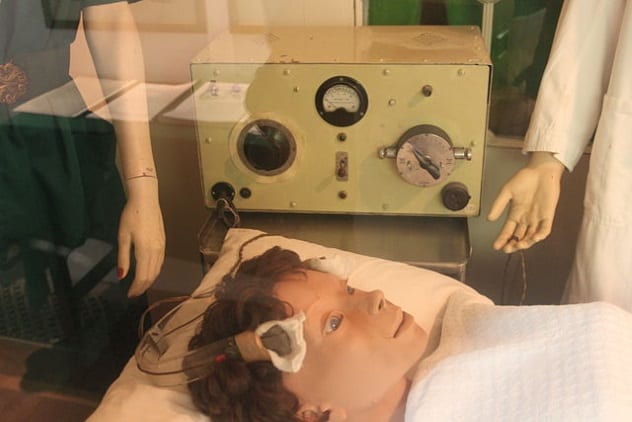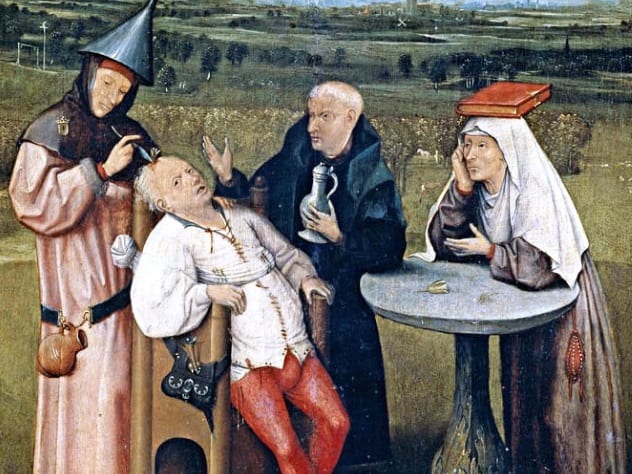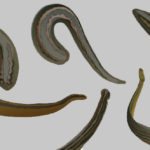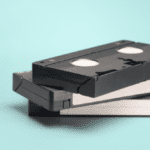Thankfully, the medical field has excelled over the past years and no longer puts their patients through these horrifying procedures. Here are ten treatments that were arguably worse than the disease that they were trying to cure.
10 Bloodletting
Bloodletting was once one of the most common procedures used for many problems, including headaches and fevers. Thousands of years ago, a doctor would use instruments such as a lancet or even a sharpened piece of wood to open a patient’s vein, allowing the blood to flow out into a receptacle. Bloodletting was commonly used because doctors believed that illnesses and diseases stemmed from an overabundance of blood in the system.[1] Physicians had a theory that in order for a person to be in good health, there would need to be a balance of the four humors, known as fire, earth, water, and air—and more commonly known as blood, phlegm, yellow bile, and black bile. By draining a certain amount of blood from the body, these four humors could be once again balanced and lead the patient to better health and life. Sometimes, if the patient was lucky enough, leeches would be used for the bloodletting instead of cutting into a vein. When the leech is applied to the skin, it is able to suck several times its own body weight in blood from the patient. The use of leeches started to decline after 1850.
9 Hydrotherapy
Hydrotherapy was used to help treat mental illness at many institutions at the beginning of the 20th century. It was believed that water would be an effective treatment because when heated or cooled, it could be applied to the skin, producing different reactions throughout the body.[2] This isn’t just a relaxing dip into the hot tub or a quick swim at the pool, though. Some of the treatments were harmless and consisted of continuous warm or cold baths. That doesn’t sound so bad, right? Those baths could sometimes last for hours, though—or days. These continuous baths were usually held in small rooms with little or no light or audio stimulation. They also used packs that consisted of sheets dipped in different temperatures of water, which would be wrapped around the patient, sometimes for hours. Hydrotherapy is now a more relaxing form of treatment and is used to relieve pain, improve blood circulation, and promote relaxation. Underwater exercises and massages are the most typical forms of hydrotherapy used today, and the patient will usually be assisted by a physical therapist—much better service than what patients once received.
8 Urine Therapy
Drinking your own urine may sound gross and unsanitary, but some people believe that it is a form of alternative medicine. Urine therapy refers to different medicinal practices such as the drinking of one’s own urine or massaging urine into the skin. The therapy was popularized by British naturopath John W. Armstrong. He was inspired by his family’s practice of treating various ailments with urine, including toothaches and minor stings. Proponents of the treatment claim that urine contains the antibodies necessary to help the body fight off many diseases, but there have been no thorough scientific studies to back up these claims.[3]
7 Mercury Treatment
Mercury is widely known to be a potentially poisonous metal, but it was once used as a common elixir and topical medication. The Persians and Greeks used it because they considered it to be a useful ointment, and Chinese alchemists used liquid mercury and red mercury sulfide to increase lifespan and vitality. Some healers even believed that it would give their patients the ability to walk on water and gain eternal life. Mercury was also used as a popular medicine to cure sexually transmitted diseases like syphilis. Sometimes, it was said and proven that the mercury was a successful treatment for syphilis, but often, patients would die from kidney and liver damage from the mercury in their bodies.[4] Mercury is no longer readily available and is currently regulated in the United States.
6 Insulin Shock
Insulin shock, also known as insulin coma therapy, was one of the first successful treatments for schizophrenia. These treatments were known to be unpleasant and very dangerous for the patient. Insulin was first used to reduce anxiety, nervousness, tremors, vomiting, and weight loss, but when given in larger doses, the patient would enter a state of unconsciousness and become less hostile and less aggressive afterward. Insulin was used on schizophrenia patients because after they became unconsciousness or went into a coma, the psychotic thoughts would begin to disappear. It was said that recollections of thoughts and anxieties were reduced because of the therapy, and patients would appear calmer and less worried about hallucinations.[5]
5 Moldy Bread
Think twice before throwing out that moldy bread. Various cultures used mold, soils, and plants to treat many bacterial infections. Moldy bread was pressed against wounds in ancient Serbia, China, and Greece to help prevent infection. The crust of moldy bread would be pressed against scalp infections in Egypt and was dispensed for its curative properties. These remedies were believed to influence the spirit that was responsible for the illness.[6] The use of moldy bread is considered to be one of the first and rawest forms of antibiotic use to fight a disease. Although we don’t eat moldy bread, the raw form of antibiotics growing on them is what was known to help the patient.
4 Lobotomy
A lobotomy is a surgical procedure in which nerve pathways in a lobe of the brain are severed from those in other areas. It was once a disturbing treatment used to treat patients who suffered from schizophrenia, bipolar disorder, and other mental illnesses. The results began to show some promising improvements, but there were also those who failed to improve and those whose health trended downward. The use of lobotomy was criticized heavily when the practice first reached the United States, but it would later be accepted and looked at as a miracle procedure. American Neurologist Walter Jackson Freeman II replaced the procedure with transorbital lobotomy. A transorbital lobotomy consisted of something that resembled an ice pick being forced through the back of the eye socket, piercing the bone that separates the socket from the frontal lobe. The pick would then be used to sever the connections in the brain. Lobotomies would soon be replaced by less stressful and more effective forms of treatments, like antidepressants, antipsychotics, and other medications.[7]
3 Hemiglossectomy
A glossectomy is known as the procedure of removing one’s tongue, but a hemiglossectomy is the removal of only part of the tongue.[8] Hemiglossectomy was a historic treatment to improve stuttering and speech impediments. A German surgeon, Johann Frederich Dieffenbach, cut patients’ tongues down in size until this method was eventually deemed illegal after many people died from him performing the procedure. Having part of the tongue removed seems more like punishment instead of treatment, especially for a patient already dealing with stuttering problems. Speech therapy is now the most common treatment used to help patients with stuttering problems. It is much safer and more effective.
2 Electroconvulsive Therapy
Electroconvulsive therapy (ECT) is also known as shock therapy. ECT is the treatment of psychiatric disorders through the use of electric current to induce shock to the patient’s brain. ECT was introduced in the 1930s and was predominantly used to treat depression. Two electrodes would be placed over the temples, sending alternating currents through the head. The current causes an immediate cessation of consciousness and induces a convulsive seizure. The ECT treatments would be given three times a week over a period lasting anywhere from two to six weeks. More disturbed patients could receive the treatment two or three times in a single day. [9] With the development of new medications, ECT started to see a decline in the 1960s. In the 1970s, however, ECT began to be used more. Treatment delivery methods were improved, increased comfort measures were given, and there was better management of enhanced anesthesia. ECT is still considered one of the best treatments for mental illnesses, but it is only given to patients who fail to respond to the many medications that are now available.
1 Trephination
Trephination may very well be one of the worst treatments to have ever been performed on a patient. The process involved the surgical drilling of a hole into the human skull, exposing the layers surrounding the brain. It doesn’t get much more horrifying than that. Why do this? In ancient times, drilling a hole into the head was believed to release any evil spirits the person may have had. They also believed that this process possibly helped headaches, infections, convulsions, and fractures. In the earliest forms of trephination, the holes were made by scraping the bone away with a sharp stone or other obect. Primitive drilling tools were later invented and were able to drill small, round holes, and then the piece of bone would be removed. The introduction of mechanical drilling and sawing instruments would occur in the late medieval period, which allowed for easier ways to create the hole.[10] Trephination is still used today for epidural and subdural hematomas. It also allows for certain neurosurgical procedures such as intracranial pressure monitoring or a craniotomy. The tools used for the process now are much less traumatic and can be less stressful on the patient. I’m just another bearded guy trying to write myself through life.

